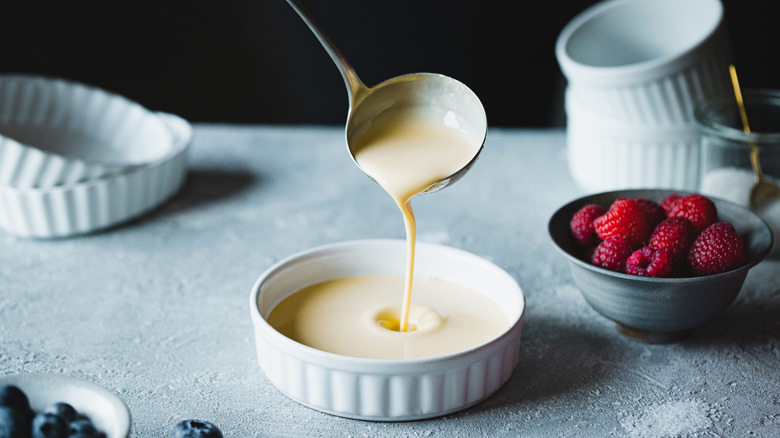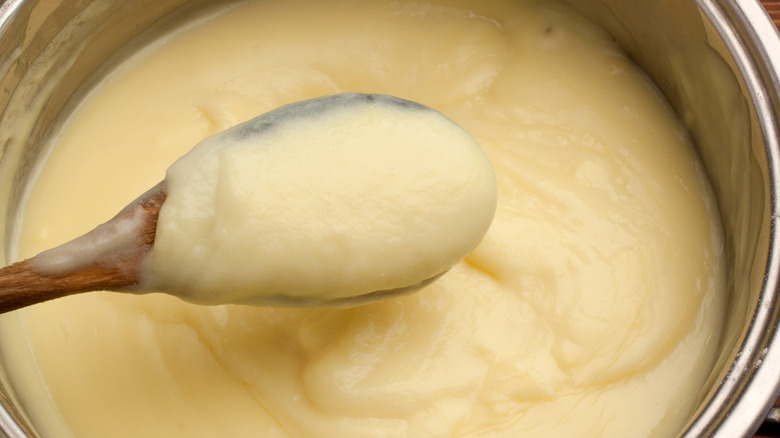Combine Milk And Cream For A Well-Balanced Custard
The key to custard is in its creaminess — and the key to creaminess is in dairy. Most custards — such as those used in a classic crème brûlée – utilize either heavy cream or milk as the recipe's predominant ingredient. The dairy usage is crucial because it forms the base of a given custard, and bears large responsibility for that creamy, soft consistency that's become custard's trademark texture. However, when it comes to milk and cream, custards aren't an either/or situation. Rather, a combination of the two dairy essentials enhances the dessert's texture — and may very well be a game-changer in your next brûlée.
This combination works because it finds a happy medium between the respective strengths — and weaknesses — of milk and cream. Whole milk, in particular, largely consists of water at about 87%, with little fat — which thins out the custard while lightly boosting the vanilla. On the flip-side, however, using just heavy cream sees less of that vanilla flavor; compared to milk, cream has significantly less water and more fat. Given these differences, the best solution is to combine the two — though the duo doesn't necessarily work best with an equal distribution.
The perfect combination of milk and cream balances texture and flavor
If you're a fan of dairy, you likely have milk and cream in your fridge — which will come in handy for your next custard. Just think twice before dividing the proportions in two. Culinary whiz Benjamin the Baker experimented with different combinations before settling on a ratio that calls for 3/4 of a cup of cream for every 1/4 cup of milk. Similarly, Land O Lakes recommends a custard that's 1/3 milk for every one cup of cream.
Of course, if you only have milk on hand, you don't have to settle for just one of the two. You can actually make your own heavy cream by combining milk and butter. And if you want a lighter custard, nothing says you can't add more milk than cream. It's a matter of preference and toying with whatever works best for your recipe.
Moreover, crème brûlée is just the starting point. The ingredient duality can apply across recipes — and characterize all of your favorite custard-based desserts. For instance, don't just add two forms of dairy to your custard, but also incorporate some chocolate. Or, head in a different direction entirely. Custard-based desserts range from Italy's beloved — and alcoholic — zabaglione to Portuguese egg tarts. It may take some trial and error, however, before you settle on the best milk to cream ratio. All that means is you may have to taste test a few custards.

